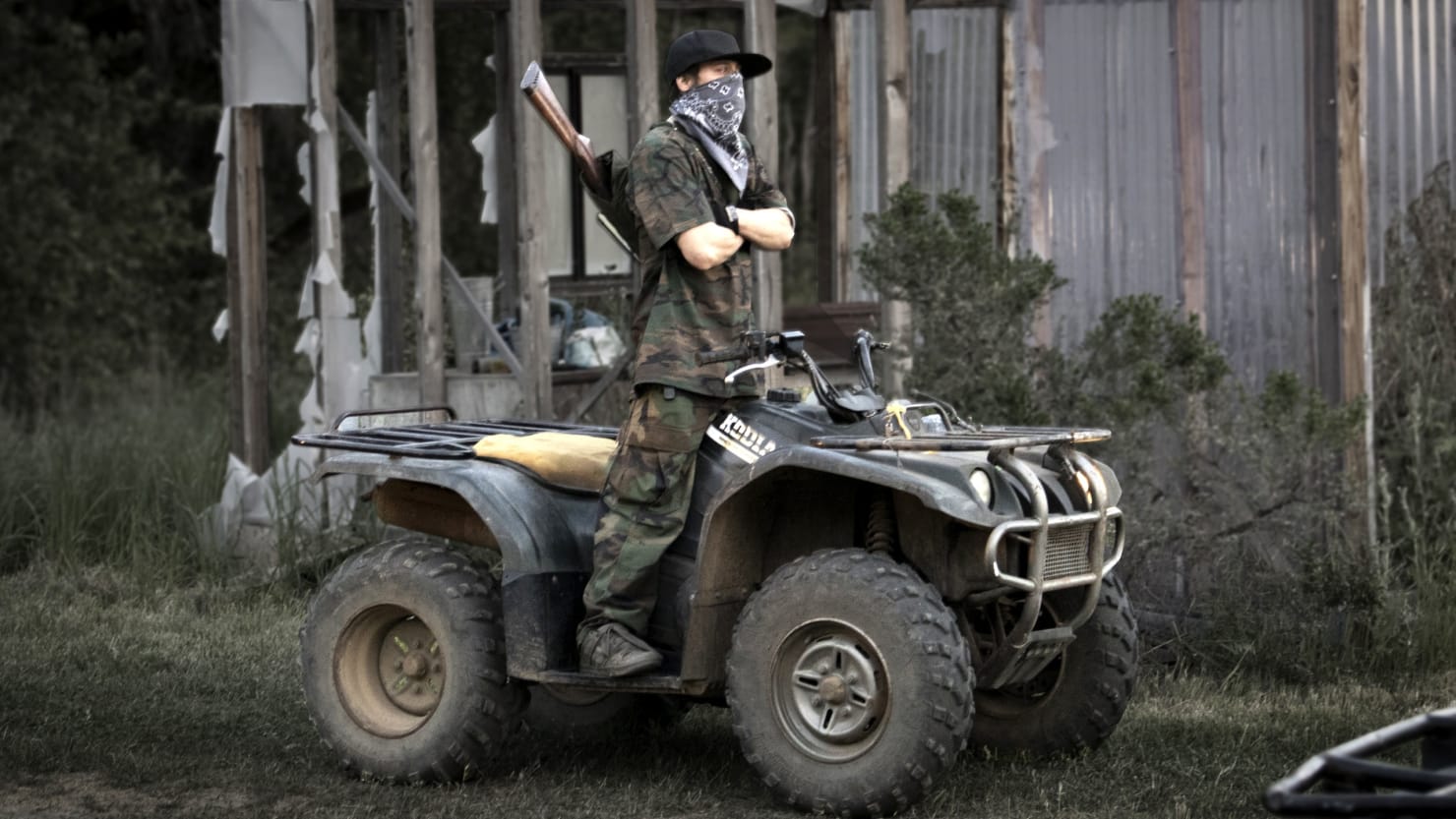Murder Mountain, Netflix
Drug culture. That’s what we want to promote in rural Sonoma County.
Said no sane, sober person, ever.

More people go missing in Northern California’s Humboldt County, a stunning, verdant enclave of mountains, rivers, and redwood trees, than anywhere in the state. Fliers dot the sides of movie theaters, corner groceries, and telephone poles, bearing smiling faces and similar pleas: “Have you seen me?” Police and locals agree on little here, though both acknowledge the lure that swallows so many into oblivion: the cannabis industry.
Roughly 60 percent of marijuana grown in the U.S. comes from Humboldt. And while modern-day attitudes consider the drug largely harmless, the tangle of weed farms in the Humboldt town of Alderpoint has given way to its own society, its own rules, and a sometimes violent lawlessness residents liken to the last vestige of the Wild West. A meth addict can kill a young farmer to whom he owes money, often without fear that law enforcement will bother to investigate. It’s why the mountain on which the town sits is known as Murder Mountain.
Murder Mountain, a six-part Fusion docuseries now streaming on Netflix, follows the disappearance and murder of 29-year-old Garret Rodriguez, a friendly surfer-boy from San Diego who ventured north to cash in on California’s green rush. Through the search for clues in his case—handled almost entirely by his family and a private investigator, in the face of an apathetic local police force—the series infiltrates the notoriously close-knit community of Alderpoint, shedding light on how this supposed Eden became a haven for criminality.
We come to know Rodriguez through his kindly father, who speaks in even tones about the green-eyed boy he bonded with through fishing and surfing in the San Diego neighborhood of Ocean Beach. He’d bought a small square of land by the sea in Mexico for his son, promising to give it to him if he earned the money to build a house there. Garret had intended to work long-range fishing jobs for the cash, until he heard of a faster way to make more money—by harvesting cannabis for farmers up north. It seemed ideal, as it does to many “trimmigrants” who journey up to earn thousands for a month or two of work, then find themselves ensnared in a system more complex (and often more dangerous) than they bargained for.
Newcomers are often exploited, we learn, especially those without connections in Humboldt who find themselves working on illegal farms. Poor cell service makes it difficult to communicate, which is why Garret’s father only heard from his son about once every two weeks. And while Garret soon found himself thriving, in charge of a farmer’s entire crop, by the time he set foot in Alderpoint the town was far from the hippie refuge it had once been in the ’70s. Crackdowns on illegal marijuana farming in the ’80s had driven prices up. Heavy-handed police tactics drove gentler farmers away, according to residents, leaving the more criminal-minded behind. A medical marijuana law passed in 1993, meanwhile, heralded an influx of profiteers. All while Humboldt’s densely wooded, mountainous terrain made it easy for illegal operations to hide.
Within a year, Garret’s father stopped receiving calls from his son. By April 2013, he had reported him missing and grown frustrated with police. His tightly controlled voice cracks at the memory of law enforcement allegedly calling his son a “loser,” a drug dealer, and refusing to search, citing a lack of “proof” that Garret had ever been in Humboldt. He hires a private investigator, retired detective Chris Cook, who comes across a tip pointing them toward Garret’s white truck, still in Alderpoint and registered in his name. It becomes the first of many solid leads that, when reported to police, seem to matter maddeningly little, for reasons never wholly clear.
For his part, Humboldt County Sheriff Mike Downey insists his force was simply overwhelmed with homicide cases that took precedence over missing persons cases. Other law enforcement talking heads share another refrain: That it falls on the community of Alderpoint, where many illegal grow operations thrive along with an “outlaw” culture of silence, to work with police and come forward with information.
Yet time and again, Cook and Alderpoint locals who become invested in Garret’s case seem to present Humboldt police with precisely what they’ve asked for: information about what happened to Garret, corroborated by many in the neighborhood, pinpointed down to the very ranch where his body may be buried. Yet months go by without investigation from police. The locals’ tips are dismissed as “hearsay.” Searching the ranch is deemed impossible because it is private property. One resident sums up police attitudes toward the people of Alderpoint: “Let them kill each other.”
It’s little surprise, then, when eight angry vigilantes band together on Thanksgiving night in 2013 to seek their own answers from the man suspected of killing Garret. Their groundbreaking findings—a murder confession, and a location on the body—grant precious closure to Garret’s family, and make them heroes in the eyes of a neglected community. Yet strangely, rather than probe the man who confessed to Garret’s murder, police seem more interested in prosecuting the vigilantes who shot that suspect in the knee, forced him to lead them to Garret’s body, then dropped him off at a hospital. Officers question the suspect in his hospital bed—not about Garret, but about the men who intimidated him, then let him go. To this day, no arrests have been made in Garret’s murder—and only two men who heard the confession are still alive.
But Garret’s is only the first of three violent deaths in Alderpoint that Murder Mountain explores, each tangled in the aftermath of the last, and bizarrely senseless. Combined with testimony from both legal and illegal small farmers and from those behind Alderpoint’s original vision of peaceful community, the series tracks how far Humboldt has strayed from the days when hippies ruled the mountain.
To its credit, the series casts a humanizing lens on all its subjects, whether they abide by the law or not. It also surveys the pros and cons of marijuana legalization up to the present day, shedding necessary light on the often crushing burdens of going legal—the permit fees, taxes, and regulations that stack up to tens of thousands of dollars, forcing droves of small, family-owned farms out of business. (Not to mention collapsing the market and driving another spike in crime around Humboldt.)
In surveying nearly five decades of Humboldt history along with the minute twists and turns of Garret’s death and those that follow, however, the series spreads itself a bit thin. It tends to split episodes in two, dedicating half its screen time to a narrative-driven mystery and the other half to an (admittedly less intriguing) examination of what has made Humboldt the place it is today, as told by the farmers who live there, none of whom are connected to the murders. The result tends to stall momentum on both fronts, making neither thread particularly satisfying.
It’s not the next Making a Murderer. But as a window into a reclusive world from which many Americans who smoke pot benefit, Murder Mountain is an eye-opening watch. Weed itself may not be harmful, but the environment in which it is grown might swallow souls whole. A woman scornfully captures the darkness over Murder Mountain in a line that lingers after the credits roll: “They should call it Widow Mountain.”
https://www.thedailybeast.com/netflixs-murder-mountain-where-marijuana-can-kill
